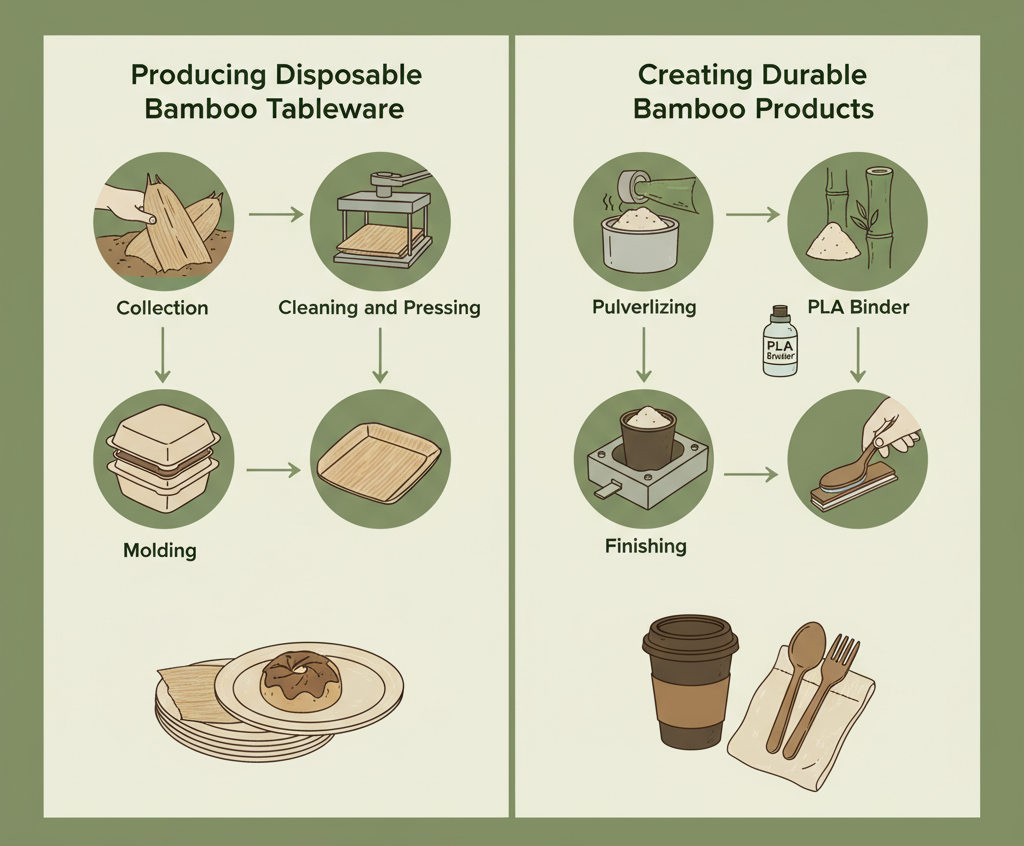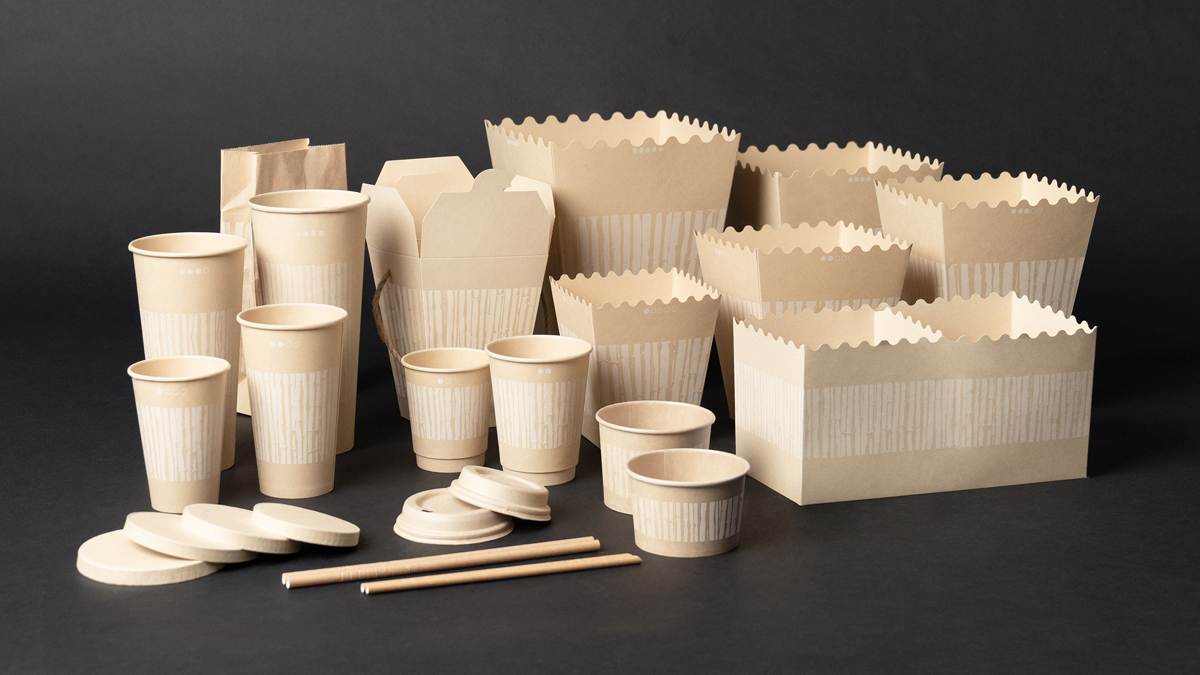Bamboo Packaging: A Practical Look at a Sustainable Material
Everyone’s looking for ways to cut down on plastic. For businesses in food service, retail, or cosmetics, packaging is a constant challenge. You need something that protects your product, looks good, and doesn’t harm the environment. At MTPak, we help brands with this exact problem. Bamboo is one material that keeps coming up — it's not a miracle cure, but it's a good, useful choice for a lot of things. This plant-based material is a renewable option for traditional plastic and paper packaging.
This article talks about bamboo packing. We'll cover what it is, how it's manufactured, its pros and cons in the real world, and how to tell if it's right for your business.
What Exactly is Bamboo Packaging?
Bamboo packaging is any packaging product derived from the bamboo plant. First, it's important to know that bamboo is not a tree; it's a kind of grass. This difference is important because it grows very quickly — like grass. Some kinds can grow more than three feet in one day and reach full size in about 3 to 5 years.
This rapid growth cycle makes it highly renewable. It typically requires less water and no pesticides to cultivate. Furthermore, bamboo groves absorb more carbon dioxide and release more oxygen than a comparable stand of trees. From a raw material standpoint, it's efficient and environmentally sound.
How is Bamboo Packaging Manufactured?
How does a fast-growing plant become a coffee cup or a food container? The production method varies significantly between disposable items, like plates, and durable goods, like reusable utensils.
Producing Disposable Bamboo Tableware
Many single-use bamboo items, such as plates and bowls, are made from the sheath—the hard, outer layer that naturally falls off the bamboo culm.
1. Collection: The sheaths are picked up once they fall to the ground.
2. Cleaning and Pressing: They are cleaned, boiled to kill germs, and then laminated together under heat and pressure to make a strong sheet.
3. Molding: The sheet is pressed into the shape of a plate or a clamshell container. These things are meant to be composted, but you may often use them again.
Creating Durable Bamboo Products
The whole bamboo stalk is utilized for strong things like flatware or jars for cosmetics.
1. Pulverizing: The bamboo that was cut down is pounded into a fine powder.
1. Molding: The powder is combined with a natural binder, such as PLA made from plants, and then pumped into molds under high pressure to make the product.
2. Finishing: The products are sanded and polished until they are smooth. This approach makes a sturdy, reusable product that looks good and breaks down in the environment.
It depends on what you need to do the correct thing. A bakery might utilize pressed-sheath containers for pastries, whereas a firm that sells reusable travel utensils would need the molded type.
What Are the Real Benefits of Bamboo Packaging?
Bamboo is good for the environment and for how your packaging operates. It solves a lot of problems in the current world at once. Let's look at the specific places where it matters.
It Grows Back Fast
It takes bamboo 3 to 5 years to grow to the correct size to cut down, which is far faster than hardwood trees. This quick cycle makes sure that those who use a lot of things, such as snack makers, always have what they need. It can be used instead of wood pulp.
It Breaks Down Completely
Bamboo packaging breaks down into soil in a commercial composter in just a few months. This thorough breakdown is important for things that are thrown away, like food containers. They don't leave any plastic trash behind.
It’s Surprisingly Tough
Bamboo fiber is quite strong when pulled. Containers for items like pet food or rice can withstand shipping and handling. They don't crack as easily as you think.
It Looks the Part
The natural texture of the material shows that it is high quality and good for the environment. This style works for boxes of organic tea or cosmetics. The look directly shows value.
What are the Limitations of Bamboo Packaging?
There are a few specific limitations on the material while making your choice, mostly around cost, compatibility, and end-of-life handling. These things don't mean the deal is off, but they do need some preparation ahead of time.
It Carries a Higher Price Tag
Bamboo packaging costs more than regular paperboard or plastic. The cost goes up because of the raw materials and the specific manufacturing. When it comes to high-volume, low-margin commodities like bottled water, the cost differential has to be justified.
Barrier Properties Need Support
Pure bamboo is porous. It won't block moisture for items like sauces or yogurt cups. You often need a PLA liner to create a functional barrier, similar to how a coffee bag uses a foil layer.
End-of-Life Requires Specific Conditions
Bamboo doesn't break down well in a backyard compost pile. It needs the high heat of an industrial facility. If it ends up in a landfill, the environmental benefit is lost. Clear disposal instructions are essential.
Where Else Do We See Bamboo Used?
Bamboo is a vital resource in many fields because of its amazing characteristics. This extensive use makes it a useful modern industrial material, going far beyond its reputation as a niche eco-friendly commodity. The table below shows some of the many ways it can be used.
| Industry / Category | Specific Examples | Key Characteristics / Benefits |
|---|---|---|
| Construction | Scaffolding, flooring, structural beams | Extremely strong & flexible |
| Textiles & Fabrics | Clothing, bedsheets, towels | Soft, breathable, anti-microbial |
| Furniture & Home Goods | Furniture, cutting boards, utensils | Durable, stylish, sustainable |
| Paper & Pulp | Printing paper, tissue, packaging | Fast-growing, renewable resource |
| Consumer Products | Bicycle frames, electronics cases | Lightweight yet strong |
| Culinary Uses | Bamboo shoots, steamers, skewers | Edible shoots; natural kitchenware |
Is Bamboo Packaging a Good Fit for My Business?
Bamboo packaging isn't right for everyone, but it works well for some products. If your business fits into one of these areas, think about using bamboo. The material fits with both the brand's message and its utilitarian needs.
• Food Service: Great for snacks, baked goods, and meals to go. Bamboo plates, bowls, and containers do a good job of keeping grease and moisture out.
• Cosmetics & Personal Care: A great choice for firms who desire eco-friendly gift boxes, tubes, or jars. It gives off a clean, natural look.
• Eco-Conscious Brands: If you care about the environment and want to show it, bamboo packaging is a great way to do so.
MTPak offers specific formats for different market needs. The aim is to match the material and construction to your product's job.
For food service, we make plates, bowls, and containers that handle hot, greasy items without getting soft. In retail, bamboo works for cosmetic jars or as a stiff backing card for blister packs. Smaller items like coffee cup sleeves or food picks are also common. The choice comes down to the application—a molded lid for a coffee canister needs durability, while a laminated box for tea focuses on appearance. We help select the right type for the task.
Conclusion
Bamboo packaging is a good alternative to standard materials. Its capacity to be renewed and composted are big pluses, while its expense and compatibility required careful planning.
At MTPak, we approach bamboo as engineers. We focus on its material properties—like OTR (oxygen transmission rate) and WVTR (water vapor transmission rate)—when lining a coffee bag. We ensure products meet relevant food contact standards like FDA or EU regulations. Our job is to give you the facts and a reliable supply of packaging that works, so you can make an informed choice for your brand and the planet.
Contact our team to discuss your specific product needs and get samples of our bamboo packaging options.
Email:account@mtpak.com
Contact us:https://mtpak.com/contact-mtpak
Frequently Asked Questions
1. Is bamboo packaging safe for direct food contact?
Yes, when produced correctly. MTPak sources bamboo packaging from suppliers who comply with FDA (U.S.) and EC (Europe) food contact regulations, ensuring no harmful chemicals leach into the food.
2. Can bamboo packaging be used in a microwave?
It depends on the specific product. Pure bamboo items may crack. Items with a PLA lining are often microwave-safe for short periods. Always check the manufacturer's guidelines printed on the packaging.
3. How should customers dispose of bamboo packaging?
The best option is industrial composting. If that's not available, it can be disposed of with organic waste. It should not be placed in plastic recycling streams.





